- Home
- Linda Castillo
Her Last Breath Page 9
Her Last Breath Read online
Page 9
I motion toward Maloney. “I think most of you have met Frank. He’s going to give a short presentation on what we believe happened the night Paul Borntrager and his two kids were killed.”
“Emphasis on short,” Skid mutters.
I glance down at my notes. “First, I wanted to run through everything we’ve got so far, give assignments, and get reports.”
I run through the list of information and evidence we’ve amassed so far. The as-of-yet unidentified pin and the side-view mirror. The hexagonal impression in the piece of wood buggy maker Luke Miller discovered. Then I face my team and tell them about Rasmussen’s and my trip to the Voss Brother’s Body Shop in Wooster.
“I made copies of the invoice for everyone. The original has been sent to BCI lab in London on the chance we can pick up some latents.” I scan the room. “I believe it’s relevant to the case that the work performed on the truck included having a quarter-inch-thick steel plate welded to the front end. If that vehicle is, indeed, the hit-skip, this adds premeditation and changes our case from vehicular homicide to murder one.”
“You get a description on this guy?” Glock asks.
I quote Bob Voss. “Nice looking young man and dresses like a yuppie.”
“That narrows it down,” Skid says dryly.
“What about cameras?” Pickles asks. “A lot of them body shops have security cameras.”
“They do,” I tell him, “but only in the rear lot. Here’s what we do know. The vehicle is a gray 1996 Ford F-250. BOLO is out, so other agencies including the SHP will be looking.” I don’t need to tell them that vehicles can be altered, parked, or hidden indefinitely.
“I had Lois pull the ROs of Ford F-250 trucks built between 1995 and 2005 for the three-county area. We have a total of sixty-nine registered owners. Twelve of those individuals have had DUIs in the last five years.” I turn my attention to Pickles and Skid. “I want you guys to get with Rasmussen and split everything up according to jurisdiction. Start talking to people, starting with those DUIs.”
Pickles nods. “My pleasure.”
Skid, his mouth full of burrito, offers a two-finger salute.
I continue. “There was an interesting piece of information from the buggy maker we brought in.” I pick up an enlarged photograph of the length of wood Luke Miller found. “An imprint that may have been made by the hit-skip vehicle was found on this piece from the buggy. I sent it to the lab, but took a photo so everyone could take a look.” I pass out the photos.
I give everyone a few minutes to scrutinize, then my eyes land on Mona. This is her first official briefing. She’s trying to hide her excitement, but she’s not doing a very good job of it. She’s been my dispatcher for about three years now. She attends college during the day and is close to earning a degree in criminal justice. Twice, she’s approached me about an officer position. Both times I hedged, attributing my inability to promote her to my limited budget. The truth of the matter is that, despite her enthusiasm, she’s not ready for police work. That doesn’t mean that at some point I won’t hire her; I think she’ll make a fine cop one day. But she’s not there yet.
“Reports,” I say. “Mona, did you get anything off the hotline?”
She takes a deep breath, like a kid about to take her first dive off the high board. “Hotline has been steady, but I’ve spent some time weeding out the crazy spaceship stuff.”
Skid interjects with, “That fuckin’ Mueller.”
Everyone laughs. Don Mueller has been calling in UFO sightings since he saw E.T. thirty years ago, at which point he became convinced extraterrestrials were out to kidnap him.
Mona continues. “Mrs. Obermiller reported seeing a truck drive past her farm with its headlights off the evening of the incident. She couldn’t give the color or model of the truck. Didn’t get a plate number. Couldn’t give a description of the driver. But she said it was moving fast, and she thought that was odd.”
Glock sits up straighter. “She lives about four miles down the road from that intersection, Chief.”
I make eye contact with T.J. “Will you go talk to her before you go home?”
“You bet.”
“What else, Mona?”
“Lots of people calling in wanting to know if Paul Borntrager and his kids were murdered. I guess word is getting around town. I’m telling them we’re still investigating.”
“Good answer,” I tell her. “Stick with it. Anything else?”
“That’s all I got, Chief.”
“Nice job.” I don’t miss the grin that spreads across her face before I turn my attention to Pickles and Skid. “How’d the canvassing go?”
Pickles clears wet cobwebs from his throat. “I hit the three farms off of CR 14. Amos Miller’s place. Roy Stutz’s farm. Don Jackson’s place. No one saw shit.”
I look at Skid.
“I hit the Schlabach place, the Hertzler’s farm, and that beat-up trailer home where Donnie Boyd lives.” He touches a button on his iPhone to check his notes. “Everyone seemed to like Paul Borntrager, and the wife, too. Everyone I talked to had nothing but good things to say about both of them.” He squints at the small display. “Schlabachs weren’t very forthcoming, Chief.”
“Now there’s a surprise.” The Schlabachs are a conservative Amish family and have about eight kids. I ticketed Amos Schlabach a few weeks back for refusing to display a slow-moving vehicle sign on his buggy. He reminded me I would be spending all of eternity burning in hell for having left the fold. “Did you speak with Martha?”
“Tried to.” Skid shakes his head. “She sent me packing.”
“I’ll talk to them.” But I’m not too excited about the prospect of any helpful information. “Anything else?”
“That’s it, Chief.”
I motion toward Maloney. “Take it away, Frank.”
He’s removed his jacket and wears a short-sleeved uniform shirt beneath. I suspect he’s trying to show off his biceps to Mona. That he doesn’t realize she’s more interested in his report than him makes me smile.
It takes Maloney twenty minutes to take us through the reconstruction. I’m impressed. Despite the poor quality of his sketching, he presents a credible rendition of the incident. He’s good at what he does.
“In my estimation,” he tells us, “the hit-skip broadsided that buggy at about 80 MPH.”
Because of the extent of the damage to the buggy and the location of the victims, all of us had known the truck was traveling at a high rate of speed. But to see the information in black and white, to hear the words spoken aloud, conjures images that draw a collective gasp from everyone in the room, including me.
Maloney continues. “There were no skid marks. So we’re either dealing with some kind of mechanical failure—brake failure, for example—or he was under the influence of alcohol or drugs and his reflexes were so slowed he didn’t react to the situation.”
“Could have been texting,” T.J. offers.
Swearing beneath his breath, Pickles leans back in his chair and shakes his head. “Or if he went to the trouble of having the front end of his truck reinforced, he planned this and carried it out.”
T.J. looks from Pickles to Maloney. “Is that what you think?”
Maloney looks at me. “If you combine the reconstruction with all the other data we’ve gathered…”
“If it quacks like a duck, it’s a fuckin’ duck,” Glock puts in.
“It sounds like it was premeditated,” Mona says from her place at the door. She blushes, but no one seems to notice. No one looks at her. No one argues.
“Kind of a messy way to knock off someone,” Skid says. “I mean, a lot of variables involved. One miscalculation and he could have disabled his truck, gotten a flat tire, or stranded himself at the scene.”
“If that’s what happened, this guy definitely took some risks,” Maloney puts in.
“He wanted it to look like an accident,” Glock says. “That’s the only explanation that makes sense. He planned i
t, carried it out, and covered his tracks.”
“That fits,” T.J. says.
Maloney looks down at his phone, frowns at the display. “’Scuse me, Chief. It’s the boss. Gotta take this.”
I move to the podium. “If we are dealing with premeditation,” I say, “was it a crime of opportunity? An impulse thing? He planned to kill someone—anyone—and waited for the right set of circumstances? Or, for reasons unknown, did he target Paul Borntrager?”
“Why would someone want to kill an Amish man and his kids?” Mona asks. “That’s what doesn’t make sense.”
T.J. chimes in. “Good Amish family. Solid reputation. No enemies. I don’t get it.”
A few feet away, the cadence of Maloney’s voice changes. I glance over at him to find his eyes on me and I know he’s got something. Everyone else has noticed, too, and the room falls silent, all eyes on the deputy. After another minute, he pockets his phone and crosses to where I’m standing and addresses me. “Couple of kids playing in that old grain elevator down in Coshocton County found some human remains this afternoon.”
The words penetrate my brain like a bullet traveling in slow motion. They are words I’ve dreaded for seventeen years, but I always knew would come. Still, even after all this time, I’m not prepared. Shock echoes through my body. The floor tilts beneath my feet. I stare at Maloney, a thousand thoughts running through my head. They are not the thoughts of a cop, but of someone who knows something they shouldn’t.
“Chief?”
I’m aware of Maloney looking at me oddly. The rest of my team silent and staring. I know someone spoke, but I have no idea what they said or if it was directed at me.
“Do you have any open missing person cases?” Maloney asks and I know he’s repeating the question. “Cold cases?”
“Nothing off the top of my head.” I’m operating on autopilot, going through the motions. Lying. “How old are the remains?”
“All they got is bones, so probably months or years. They’re waiting for the coroner to arrive now.”
I think of Tomasetti and something frighteningly close to panic leaps inside me. Aside from my sister and brother, he’s the only person in the world who knows I shot and killed a man when I was fourteen years old. He knows my family covered it up and that the crime was never reported to the police.
“Are you talking natural causes?” Glock asks. “Or foul play?”
“Considering the bones were hidden at the bottom of the boot pit, I’d venture to say we’re looking at a homicide.”
CHAPTER 9
The criminology texts will tell you that a murderer always returns to the scene of the crime. As I leave the city limits of Painters Mill and head south toward Coshocton County, I realize I’m no different. I wonder if other killers have an all-consuming need to know what the police are doing so they can plan their next move and stay one step ahead.
The grain elevator is the last place I want to be—the last place I should be, considering my involvement—especially when I’m in the midst of a difficult case that requires all of my time and energy. I tell myself I’m duty bound to make an appearance and offer up the resources of my department, even if the offer is token. The truth of the matter is, I can’t stay away. I need to know what’s happening with the investigation. I need to know which agency will be primary. I need to know if in the terror and panic of that night, my datt or brother left something behind that could lead the police back to me.
Caution whispers sweet warnings of impending disaster in my ear as I turn onto the desolate stretch of road where the elevator juts from the earth like some massive rock formation. I remind myself that I’m going to have to be careful. I know things about this scene, this case, this murder, that other people don’t; it would be easy to let that knowledge slip. Many a killer has hung himself by revealing information he shouldn’t have known.
The triple concrete silos of the old Wilbur Seed Company elevator loom into view as I make the turn into the gravel lot. The place had once been bustling with farm trucks and grain haulers loaded with corn or soybeans. Now, the lot is overgrown with weeds and saplings as tall as a man. Three cruisers from the Coshocton County Sheriff’s office are parked haphazardly outside the overhead door. The coroner’s van idles nearby, the rear doors standing open to welcome the dead. An ambulance from Coshocton County Memorial Hospital is parked a few feet away from the van. A fire truck from the volunteer fire department sits behind the ambulance, its diesel engine rumbling.
I wonder if the coroner’s office has bagged and loaded the remains. I wonder if those remains are on their way to the crime lab in London, Ohio for identification. I have no idea if the bones still contain DNA or if Daniel Lapp’s DNA is on file anywhere for a comparison analysis. I don’t know if he ever had any dental work done or if there are records that could conceivably identify him. The one thing I do know is that people will remember Lapp’s disappearance. Some thought he left to escape the Amish. But not his family. Lapp’s parents are dead now, but his brother, Benjamin, will undoubtedly remember my parents’ farm was the last place Daniel was seen alive.…
I experience a moment of déjà vu upon spotting a television news van from a station out of Columbus parked on the shoulder. A blond-haired woman wearing skinny jeans, stiletto heels, and a hot pink jacket finger-combs her hair. I wonder how much press the case will draw. Enough, I think. People love a good mystery, especially if it involves a dead body, and there’s an Amish connection to boot.
I park well away from the other vehicles and start toward the grain elevator. I’ve made this pilgrimage a thousand times in my nightmares, but never as a cop, never in an official capacity. Invariably, when I dream of this place, I’m either the victim, trying to save my life—or the killer, to cover my tracks. When it comes to murder, there is no in-between.
An appearance by me won’t be deemed unusual. Cops generally tend to be a nosy bunch; we like to be in the thick of things. I try hard to slip into my chief-of-police persona, but for the first time in recent memory, it’s not a good fit. I feel like a charlatan.
A flock of crows caw from the roof of the structure, mocking me as I approach. Yellow caution tape has been strung haphazardly around the area. I recognize a young deputy from the Coshocton County Sheriff’s office. We worked together during a charity event a couple of years ago. The two of us spent a freezing cold afternoon sitting on the dunking tank chair to help raise funds for an animal rescue group after twenty-eight dogs were rescued from a puppy mill near Walnut Creek. It had been a multi-jurisdictional sting on an animal cruelty case, and I got to know some of local cops in the process.
The sheriff’s deputy smiles when I reach him. “How’s it going, Chief?”
His name is Fowler Hodges, but everyone calls him Folly. We shake hands. “I heard about the remains,” I begin. “Thought I’d stop by and see if there’s anything I can do to help.”
“Couple of kids playing in the boot pit found a skull a few hours ago. They called their parents. Parents called us. Sure enough, the bones are human.”
“Any idea who it is?”
He shakes his head. “Coroner’s down there now. We’ll probably start checking cold cases.”
I nod. “Kids okay?”
“They’re fine. I suspect they’re going to be talking about it for a while.”
“I would be.”
We laugh at that, then I say, “Do you mind if I take a look?”
“Knock your socks off. Sheriff Redmon just got here a few minutes ago.” He lifts the tape. “Watch your step.”
“Thanks.” I duck beneath the tape, walk through knee high weeds, and enter the structure through the overhead door.
The last time I was here was on a bitter January night two years ago. It was during the Slaughterhouse Murders case, and I drove over here in the dead of night to see if Daniel Lapp’s remains were here—or if he’d somehow survived the shooting and returned to kill again. I found his bones that night. And John Tomasetti,
who suspected I was hiding something and followed me, bore witness to my meltdown when I realized I had, indeed, killed Lapp in self defense all those years before.
The interior hasn’t changed. Dust motes fly in the slant of light coming in from holes in the roof and walls. Cobwebs hang like Spanish moss from every visible surface. The smells of dirt and rotting wood and the tart stench of guano from the bats that have taken up residence taunt my olfactory nerves. Pigeons coo from the overhead rafters. Three Coshocton County sheriff’s deputies, Chief Redmon, and a paramedic are standing around the boot pit. I recognize two of the deputies, but I don’t recall their names.
I smile as I approach the sheriff. My heart pounds a hard tattoo in my chest when I extend my hand.
“Nice to see you again, Chief Burkholder.”
I’ve met Arnie Redmon on several occasions over the years. He’s a charismatic man of about sixty and, from what I hear, a good sheriff—and even better politician. He’s got a reputation for being tough—but fair, not only in terms of his job, but in the way he manages his department, which he runs like some elite military unit. His salt-and-pepper hair is shorn into a crew cut. He’s sprouted a thin white mustache since the last time I saw him. It makes him look like someone’s favorite grandpa. But I know better; this man is as harmless as a sniper. He’s six feet tall and built like a prize bull—one that could feed a family of six for a year. Today he’s wearing dress navy slacks with a crisp white shirt and patriotic tie. His badge is clipped to his belt like some hard-earned medal.
I shake hands with everyone in the group and then I ask the obvious question. “Any idea who’s down there?”
Redmon shakes his head. “Techs are still gathering pieces. Bones scattered all over the place.”
Everyone looks into the pit, where a young African-American firefighter stacks old boards onto a polyurethane sheet. A second firefighter squats next to where a body bag has been unzipped, opened, and spread out on the floor. The technician from the coroner’s office—a middle-aged man in full biohazard gear—squats next to the bag. From where I stand I can just make out the sphere of the skull and the dull white length of a femur.

 A Hero to Hold
A Hero to Hold A Whisper in the Dark
A Whisper in the Dark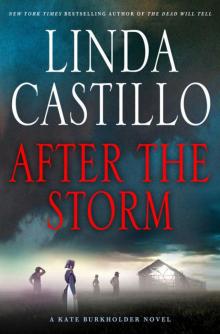 After the Storm
After the Storm A Baby Before Dawn
A Baby Before Dawn Breaking Silence
Breaking Silence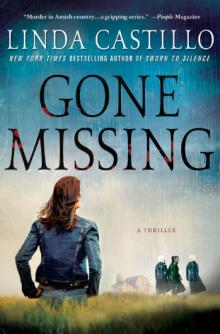 Gone Missing
Gone Missing Long Lost
Long Lost Midnight Run
Midnight Run The Dead Will Tell
The Dead Will Tell Sworn to Silence
Sworn to Silence Lay Down the Law
Lay Down the Law Safe Before Dawn
Safe Before Dawn Depth Perception
Depth Perception Seeds of Deception
Seeds of Deception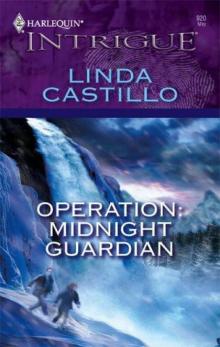 Operation: Midnight Guardian
Operation: Midnight Guardian The Perfect Victim
The Perfect Victim Operation: Midnight Tango
Operation: Midnight Tango In Plain Sight (Kate Burkholder)
In Plain Sight (Kate Burkholder) Shamed
Shamed Fallen
Fallen Her Last Breath
Her Last Breath Remember the Night (Men in Blue)
Remember the Night (Men in Blue) Dead Reckoning
Dead Reckoning Cops and ... Lovers?
Cops and ... Lovers? The Pact
The Pact A Simple Murder
A Simple Murder Among the Wicked
Among the Wicked In the Dead of Night
In the Dead of Night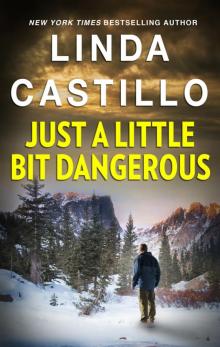 Just a Little Bit Dangerous
Just a Little Bit Dangerous The Phoenix Encounter
The Phoenix Encounter In Dark Company
In Dark Company Pray for Silence
Pray for Silence Kate Burkholder 01-Sworn to Silence
Kate Burkholder 01-Sworn to Silence Remember the Night
Remember the Night Operation: Midnight Rendezvous
Operation: Midnight Rendezvous Operation: Midnight Escape
Operation: Midnight Escape The Dead Will Tell: A Kate Burkholder Novel
The Dead Will Tell: A Kate Burkholder Novel Seeds of Deception: A Kate Burkholder Short Story
Seeds of Deception: A Kate Burkholder Short Story Gone Missing (Kate Burkholder 4) kb-4
Gone Missing (Kate Burkholder 4) kb-4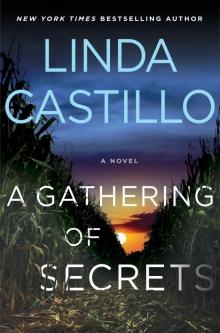 A Gathering of Secrets
A Gathering of Secrets Seeds of Deception: A Kate Burkholder Short Story (Kindle Single)
Seeds of Deception: A Kate Burkholder Short Story (Kindle Single) Pray for Silence kb-2
Pray for Silence kb-2 Operation: Midnight Cowboy
Operation: Midnight Cowboy In Dark Company_A Kate Burkholder Short Mystery
In Dark Company_A Kate Burkholder Short Mystery Sworn to Silence kb-1
Sworn to Silence kb-1 Her Last Breath: A Kate Burkholder Novel
Her Last Breath: A Kate Burkholder Novel Among the Wicked: A Kate Burkholder Novel
Among the Wicked: A Kate Burkholder Novel Breaking Silence kb-3
Breaking Silence kb-3 Kate Burkholder 2 - Pray for Silence
Kate Burkholder 2 - Pray for Silence Long Lost: A Kate Burkholder Short Story
Long Lost: A Kate Burkholder Short Story